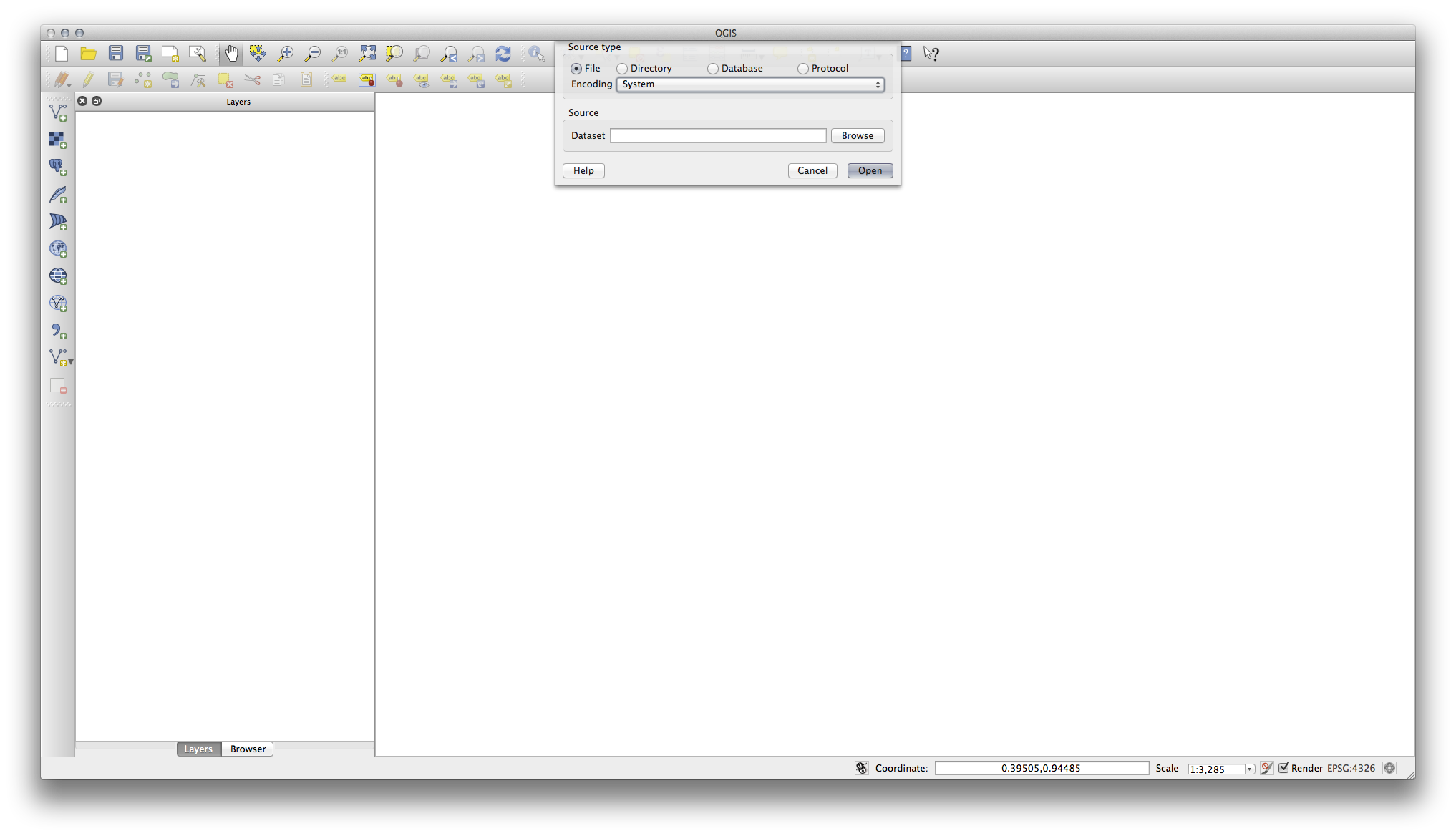2.2. Lesson: 第一レイヤの追加¶
アプリケーションを起動し、その例と演習で使用する基本的なマップを作成します。
このレッスンの目標: 例のようなマップを始める
ノート
この演習を始める前に、QGISをあなたのコンピュータにインストールしておく必要があります。また、 QGIS data downloads area から training_manual_exercise_data.zip ファイルをダウンロードしておきます。
デスクトップのショートカット、メニュー、アイテムなどからQGISを起動します。この設定はインストール時の設定に依存します。
ノート
このコースのスクリーンショットは、MacOSの上で実行されているQGIS2.0で撮影されました。あなたの設定に応じて、あなたが遭遇した画面と仕様が異なる場合があります。しかし、利用可能なボタンはすべて同じであり、コマンドはいかなるOS上でも動作します。このコースを使用するにはQGIS2.0(執筆時点での最新版)が必要です。
すぐにはじめましょう!
2.2.1.  Follow Along: マップの準備¶
Follow Along: マップの準備¶

- Click on the Browse button and navigate to the file exercise_data/epsg4326/roads.shp (in your course directory). With this file selected, click Open. You will see the original dialog, but with the file path filled in. Click Open here as well. The data you specified will now load.
おめでとうございます!ベースマップがあります。作業を保存するにはよいタイミングでしょう。
2.2.2. In Conclusion¶
レイヤの追加方法とベースマップの作成について学びました!
2.2.3. What’s Next?¶
Now you’re familiar with the function of the Add Vector Layer button, but what about all the others? How does this interface work? Before we go on with the more involved stuff, let’s first take a good look at the general layout of the QGIS interface. This is the topic of the next lesson.

